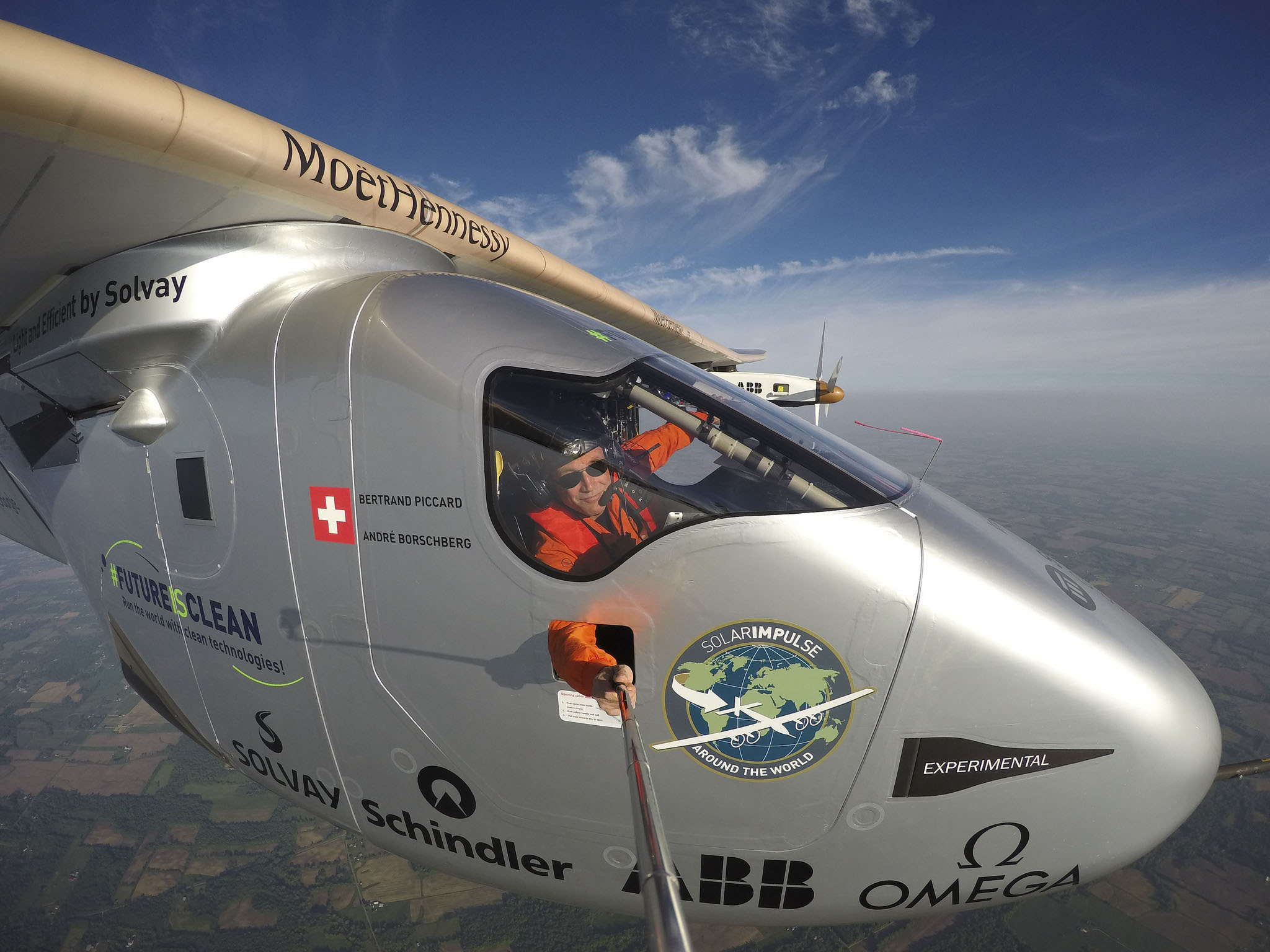Solar Impulse nears New York
May 25 flight lands in Pennsylvania
Piccard landed shortly before 9 p.m. Eastern Daylight Time after completing a 649-mile leg from Dayton, Ohio, where the team had been briefly delayed by a deflated hangar but quickly recovered because the drooping inflatable hangar did not damage the delicate aircraft. Fellow project founder and pilot André Borschberg, who has been alternating legs with Piccard as the team journeys around the world, will have the controls as Solar Impulse 2 passes the Statue of Liberty for a long-anticipated photo opportunity, “our dream since 2013,” the team says it in a post on the Solar Impulse blog.
The team has accepted visitors at various stops along its route around the world, and announced that visitors will be welcomed May 28 at Lehigh Valley International Airport, with one-hour time slots available between 10 a.m. and 4 p.m. By the morning of May 27, the first two hours were spoken for (tickets to visit are free, but online registration is required, and slots were being reserved at a brisk pace).

Along the way, they’ve passed up no opportunity to promote renewable energy, and raised $170 million to finance the effort from a long list of corporate and other sponsors. More innovative than practical, the team hopes an aircraft powered by more than 17,000 solar cells that charge 5,000 pounds of batteries to drive it through the night will inspire others to make use of the sun, and other renewable energy sources.
The airport was closed May 25 to accommodate the delicate and slow-moving aircraft’s arrival (the average speed of the May 25 flight was 33.6 knots, the team reported, which is typical) and avoid conflicts with other traffic. The stately pace of Solar Impulse 2 does facilitate photography that would be difficult and dangerous with most general aviation aircraft: the pilot can extend a “selfie stick” into the slipstream and capture images in flight, which the team posts online along with many others.
The Solar Impulse team allows online followers to get flight updates, see live telemetry and video during flights, and sign up for alerts on its website. Mission planning and weather analysis are primarily handled in Monaco, and weather is the primary factor that will dictate the timing of the flight to New York, which may be launched with limited notice if the team finds a favorable combination of conditions and timing. The team has not announced how long they plan to spend in Queens preparing for Piccard’s Atlantic crossing.




